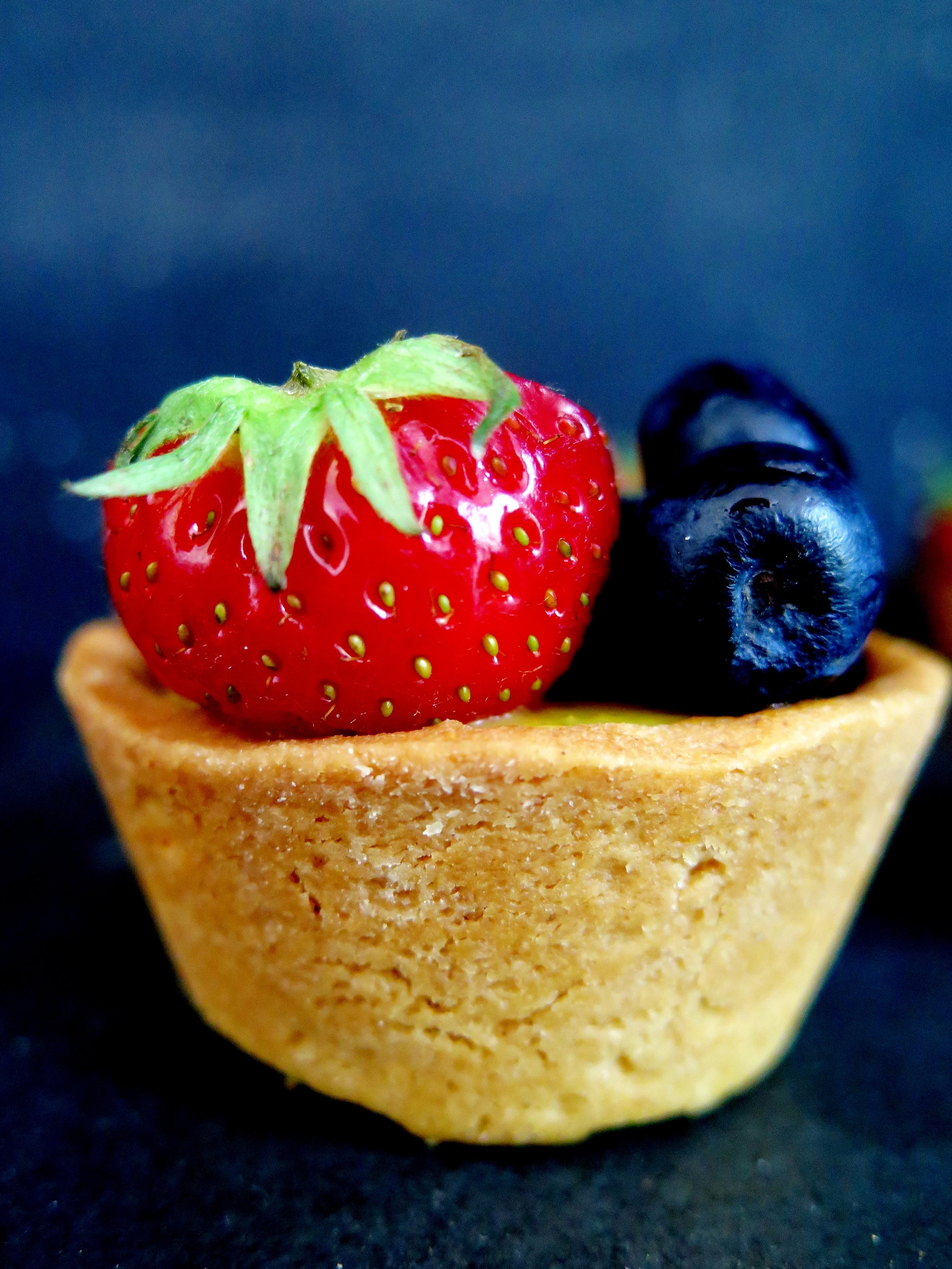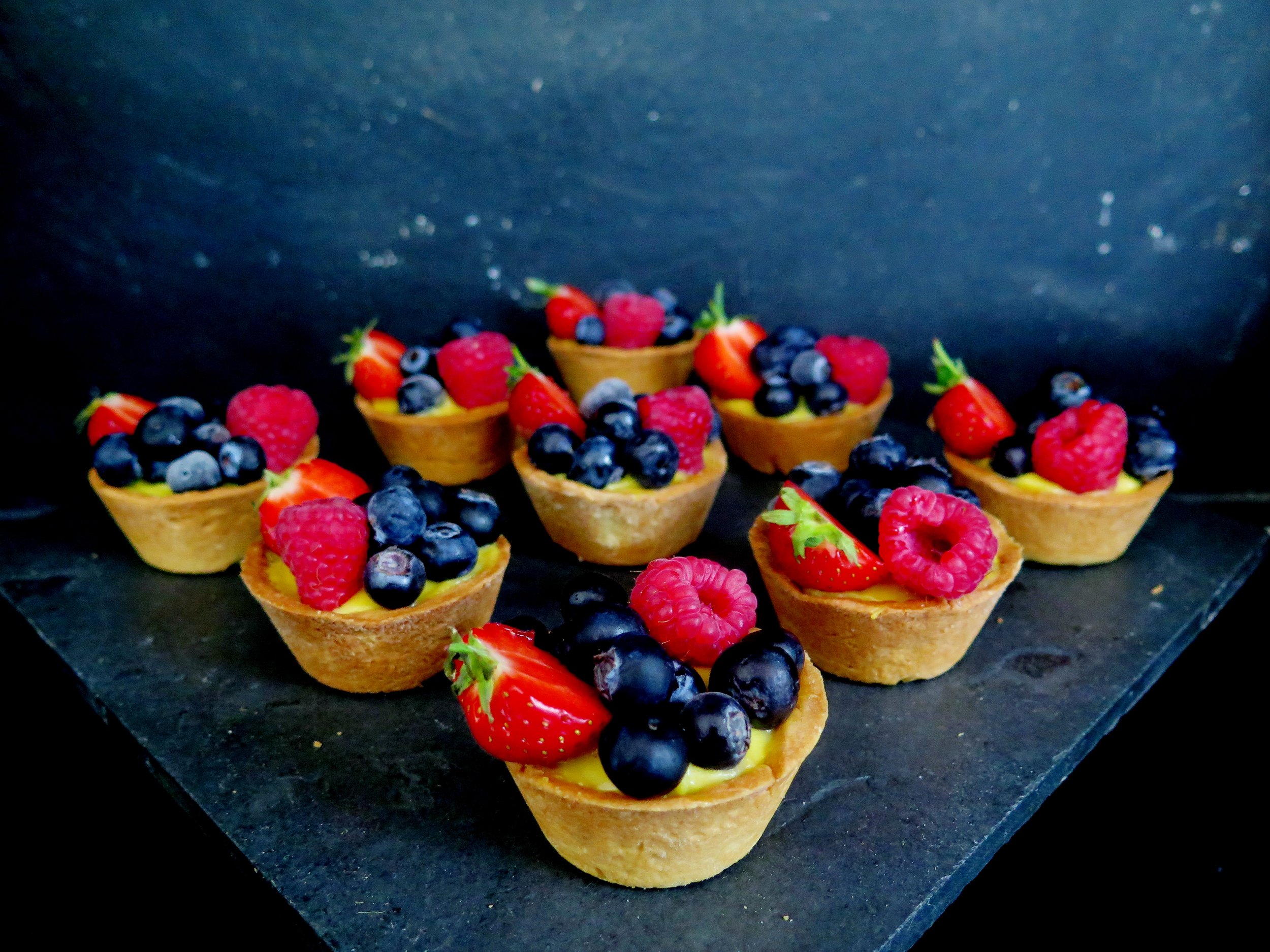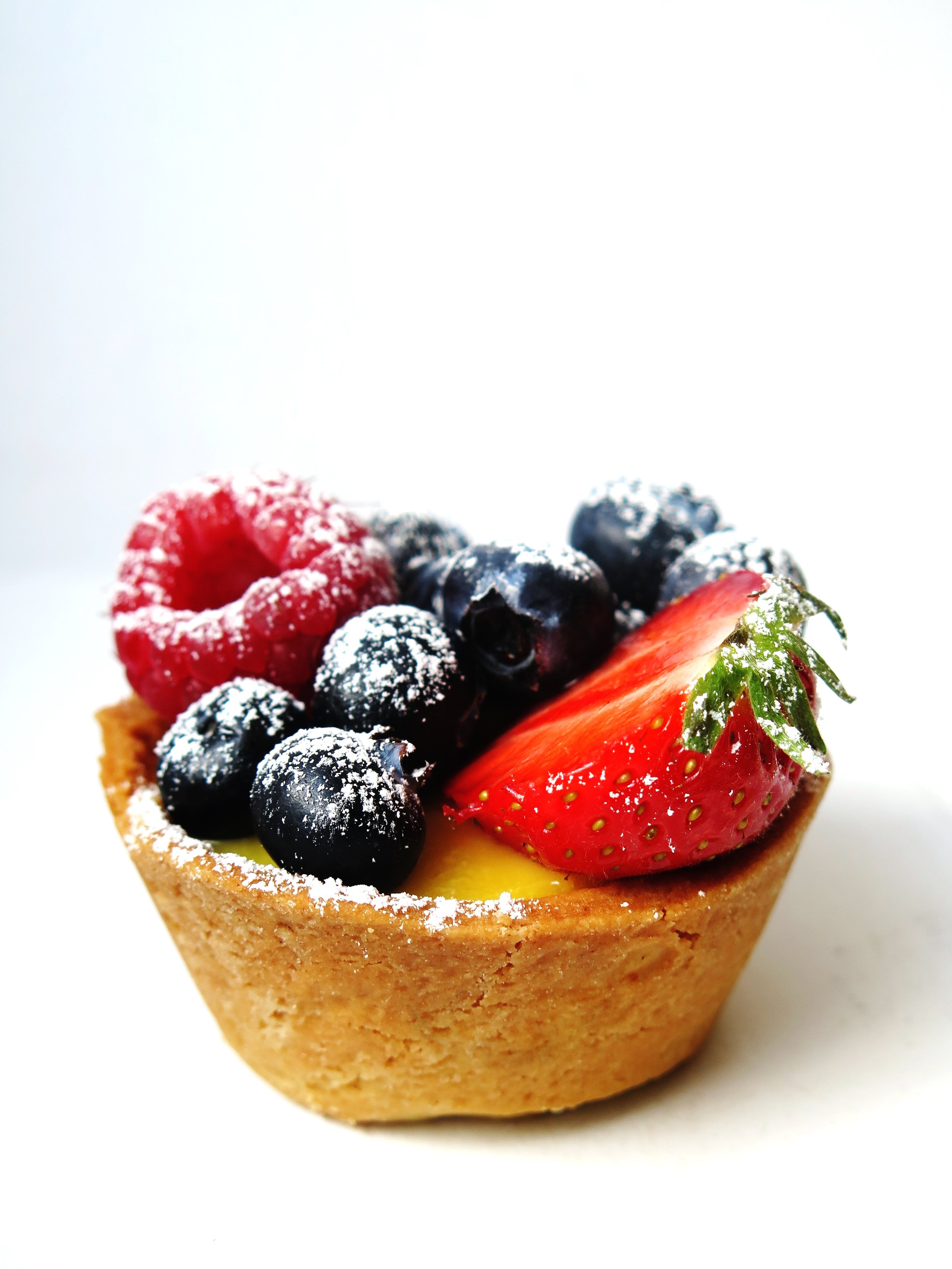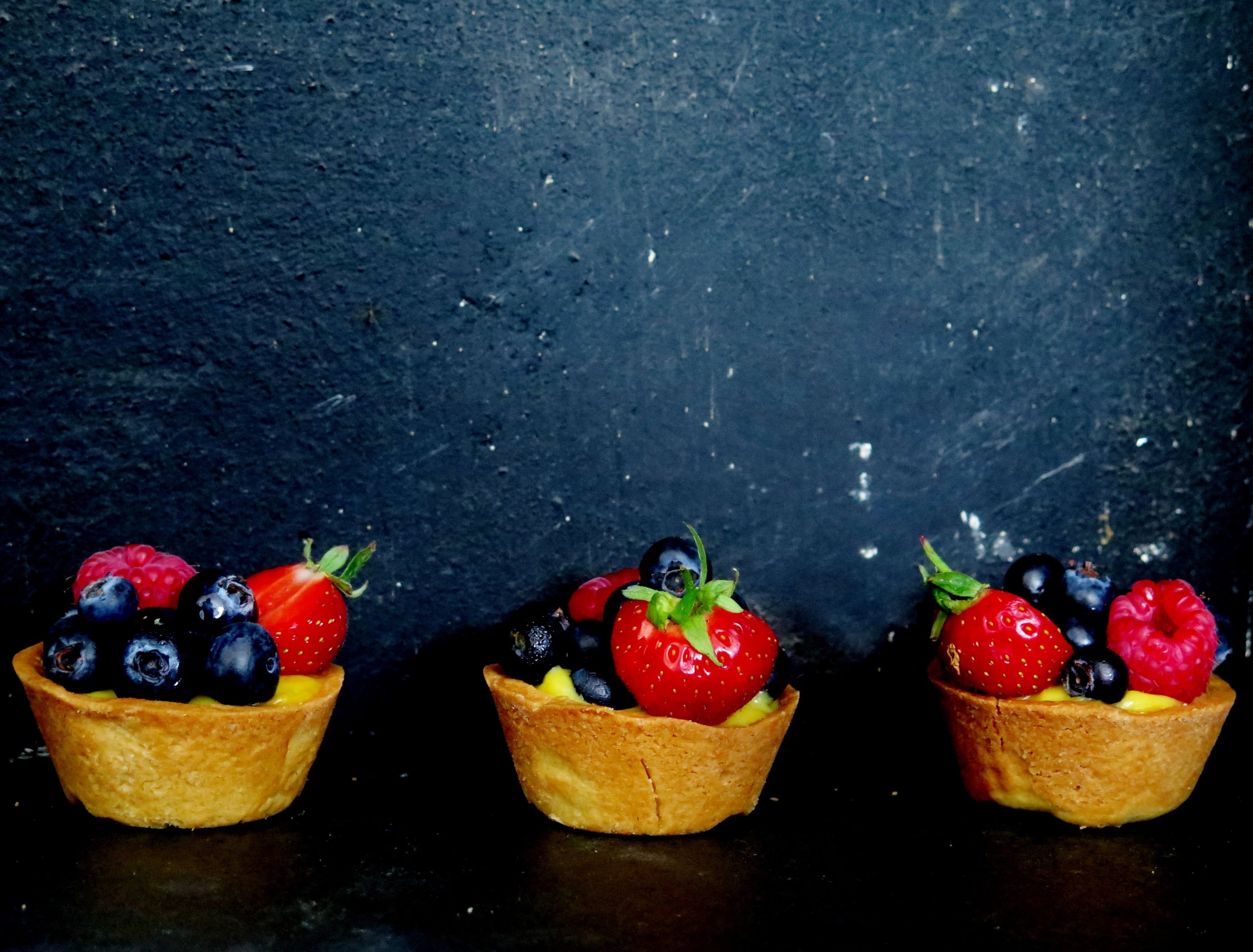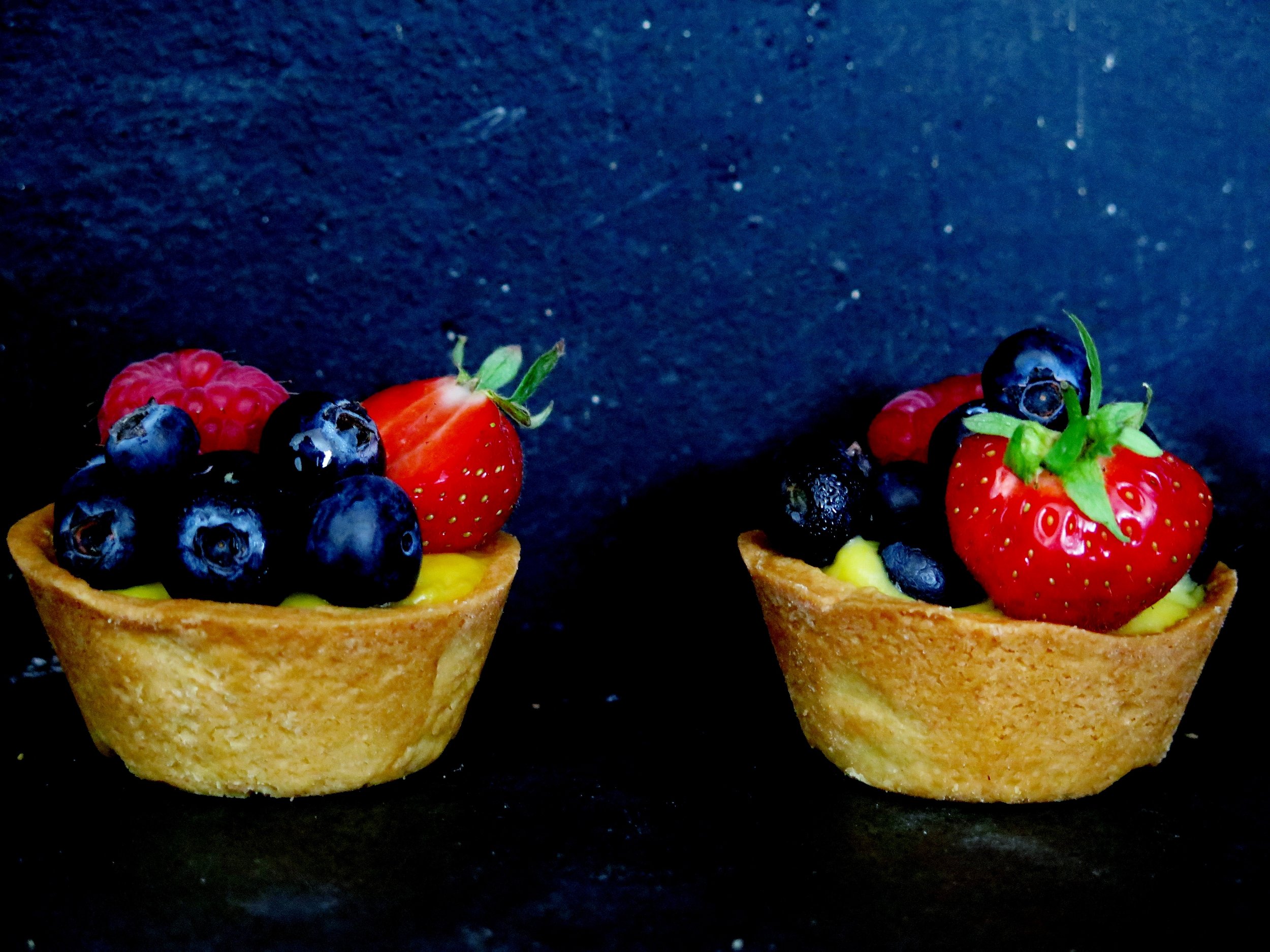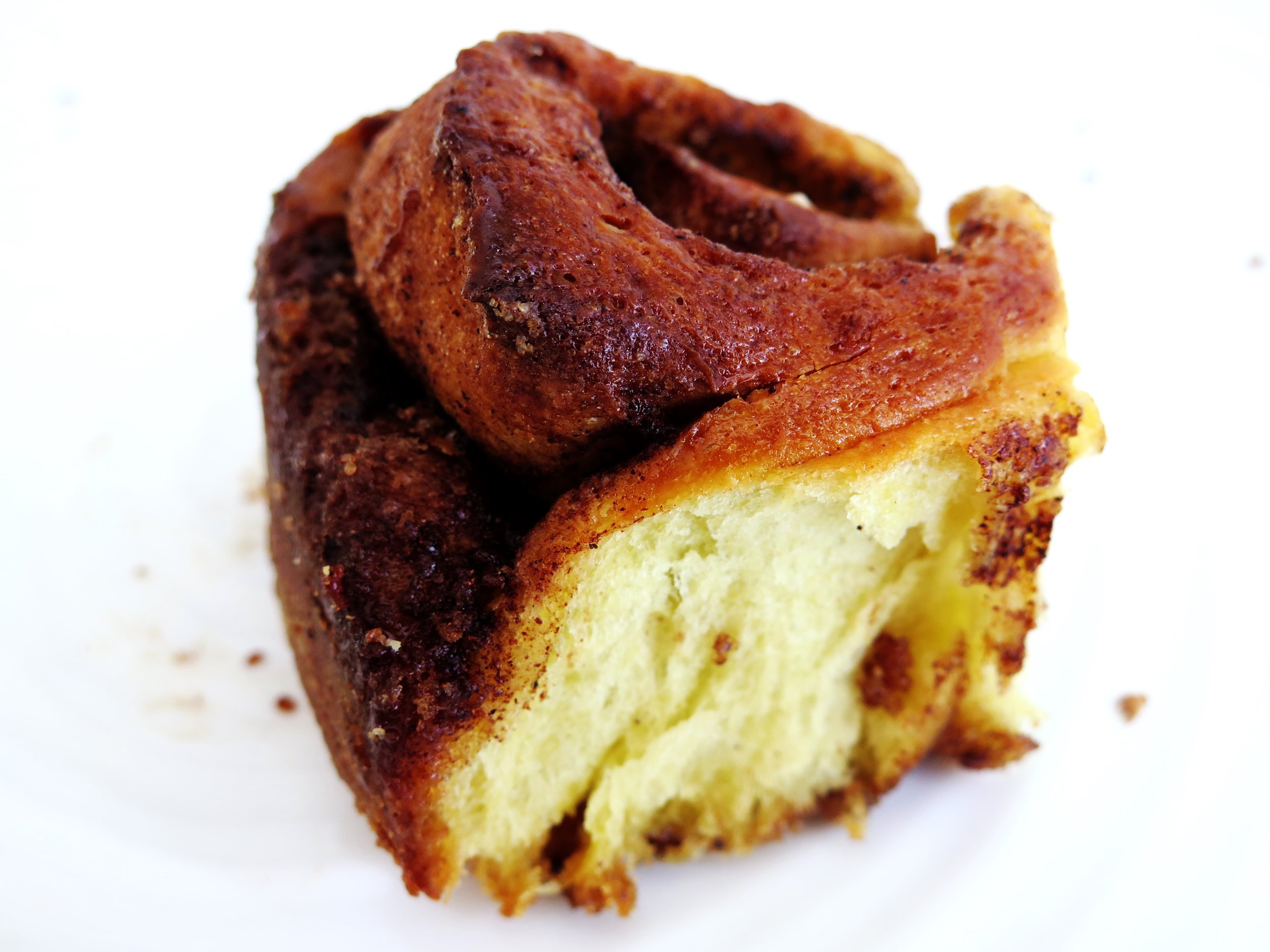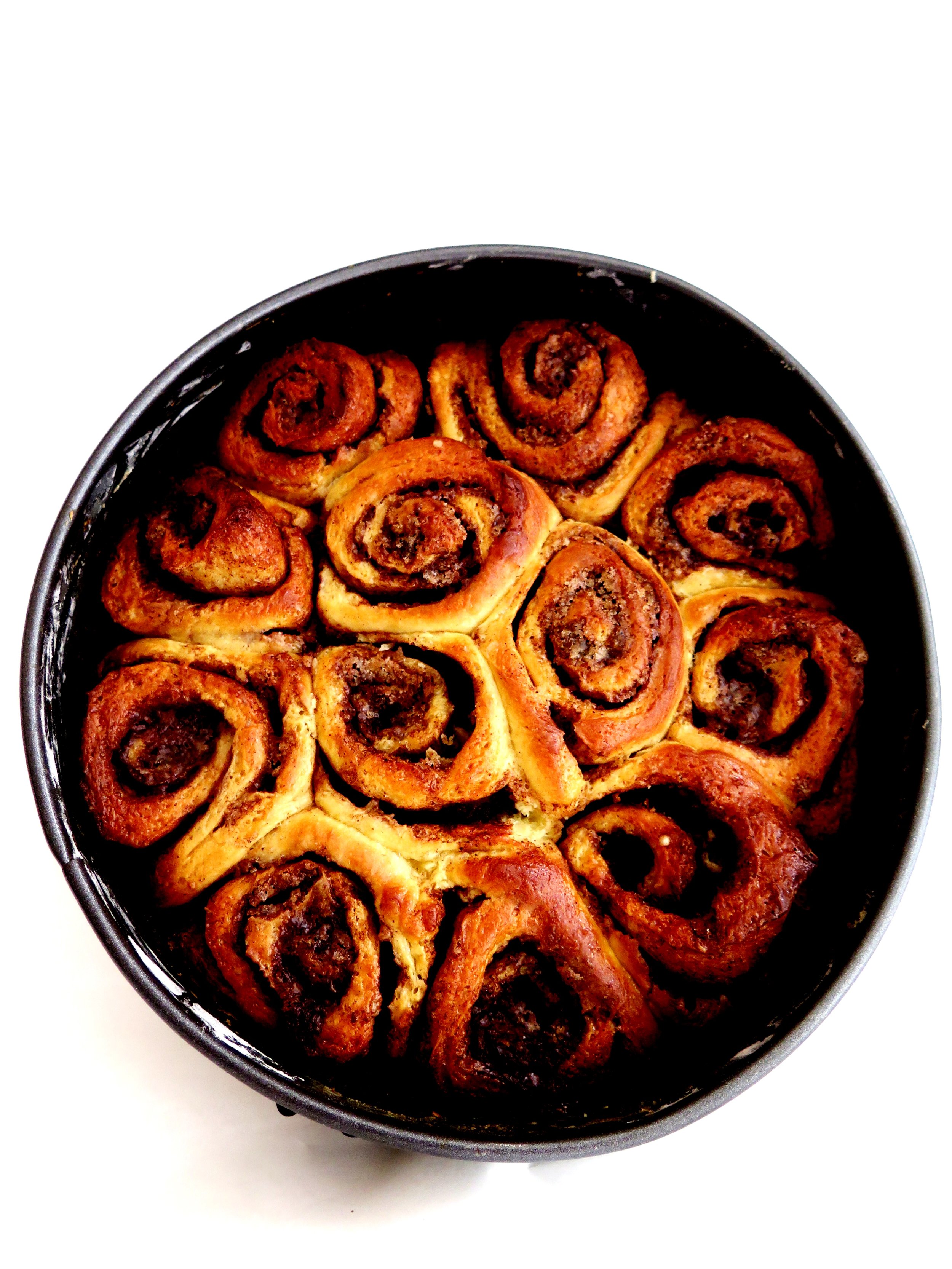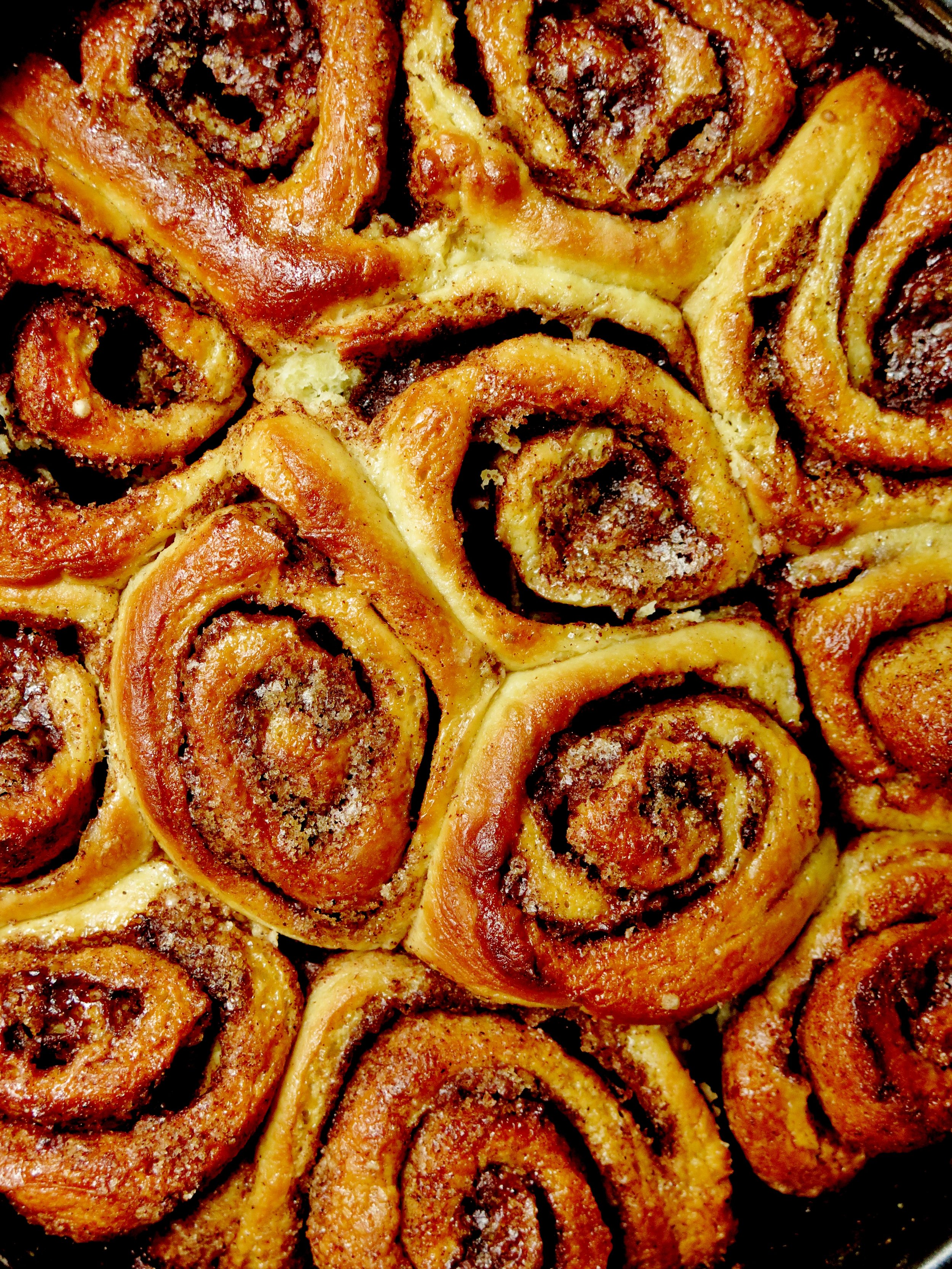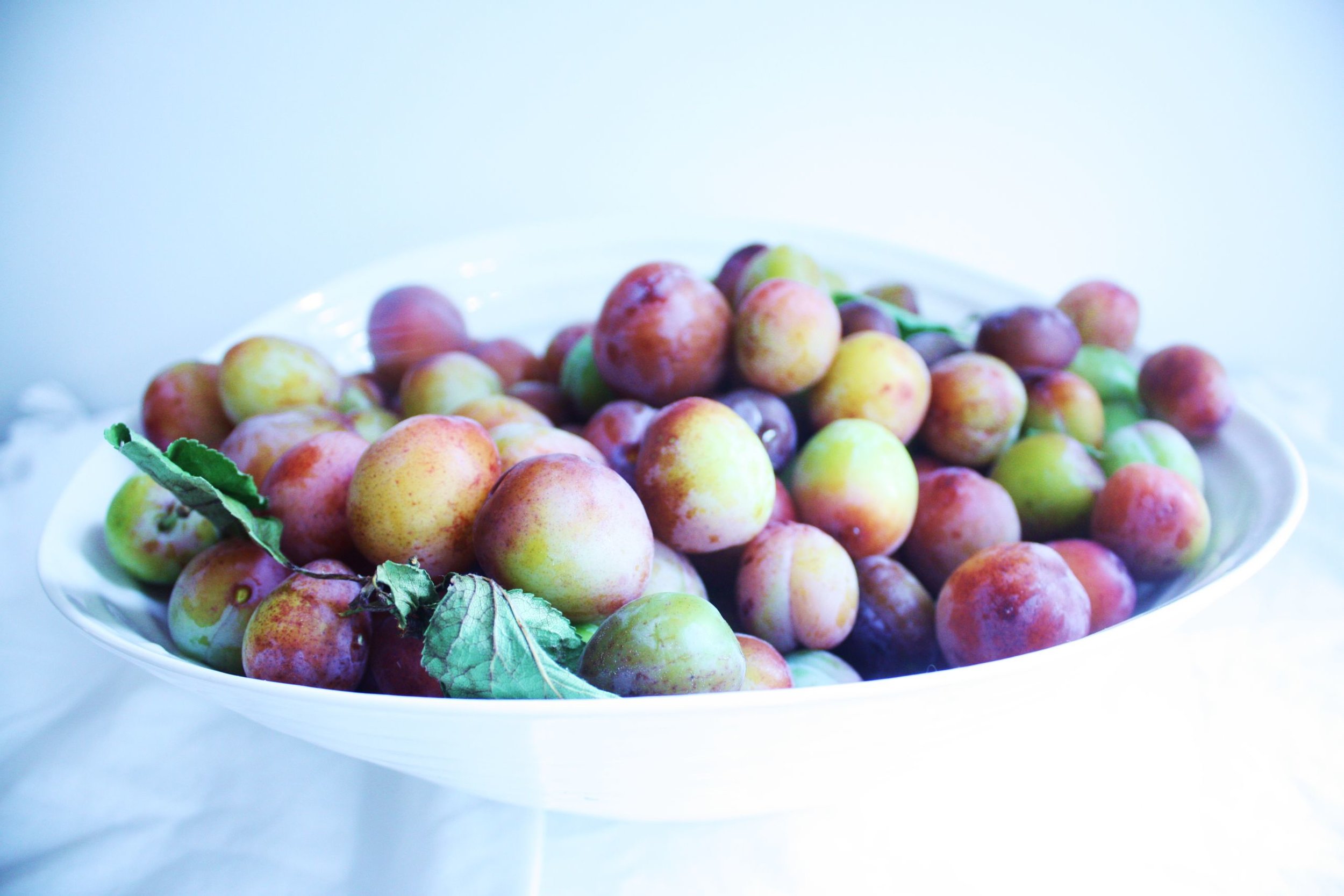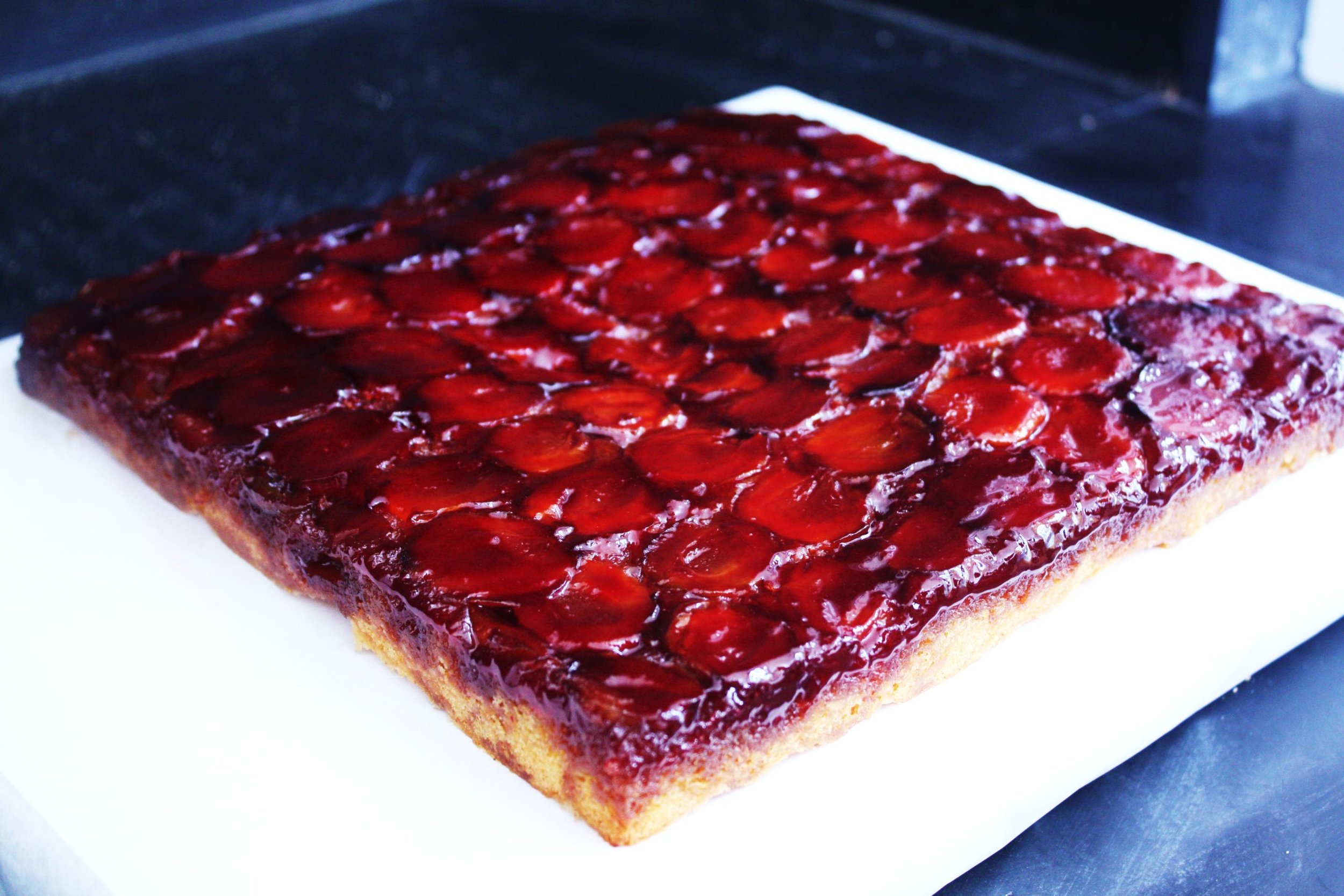 I endured school lunches for four years and then abandoned them. Waking up twenty minutes early to throw together a packed lunch seemed worth it at the time. My school lunches weren’t even bad. In fact, they were probably rather good – good enough to avoid having Jamie Oliver sniff his way into our school kitchen in pursuit of good TV.
I endured school lunches for four years and then abandoned them. Waking up twenty minutes early to throw together a packed lunch seemed worth it at the time. My school lunches weren’t even bad. In fact, they were probably rather good – good enough to avoid having Jamie Oliver sniff his way into our school kitchen in pursuit of good TV.
What turned me (and my stomach) resided in the stainless steel vats adjacent to the desserts: pools of lurid yellow purulence (custard).
Notwithstanding my decade old aversion, I decided to venture into custard territory last week. And I found my cure: lemon curd-filled tarts.
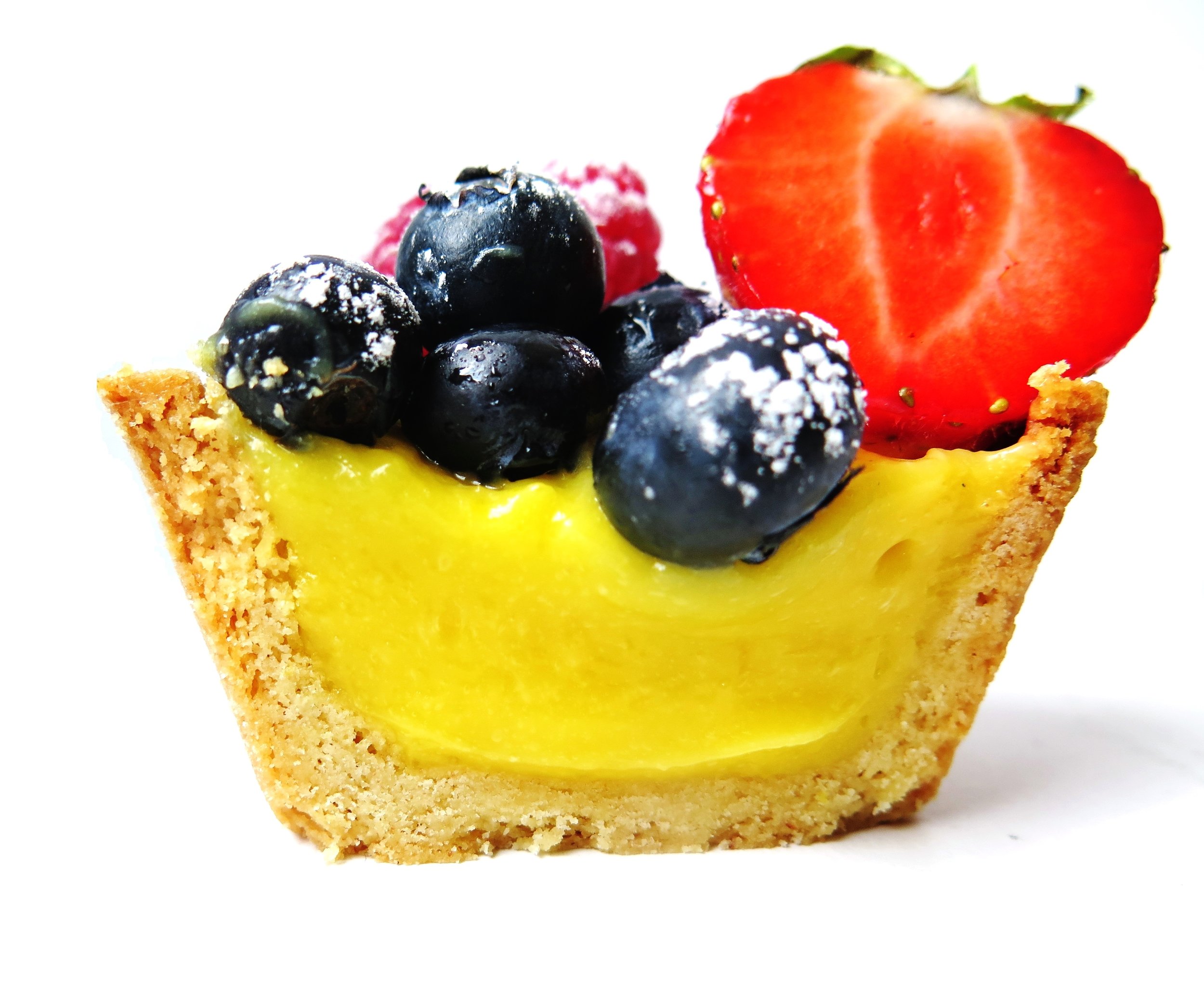
Made using both lemon juice and zest, paired with a lemon-infused tart shell, and partnered with fresh berries, these make a tangy and refreshing summer dessert.
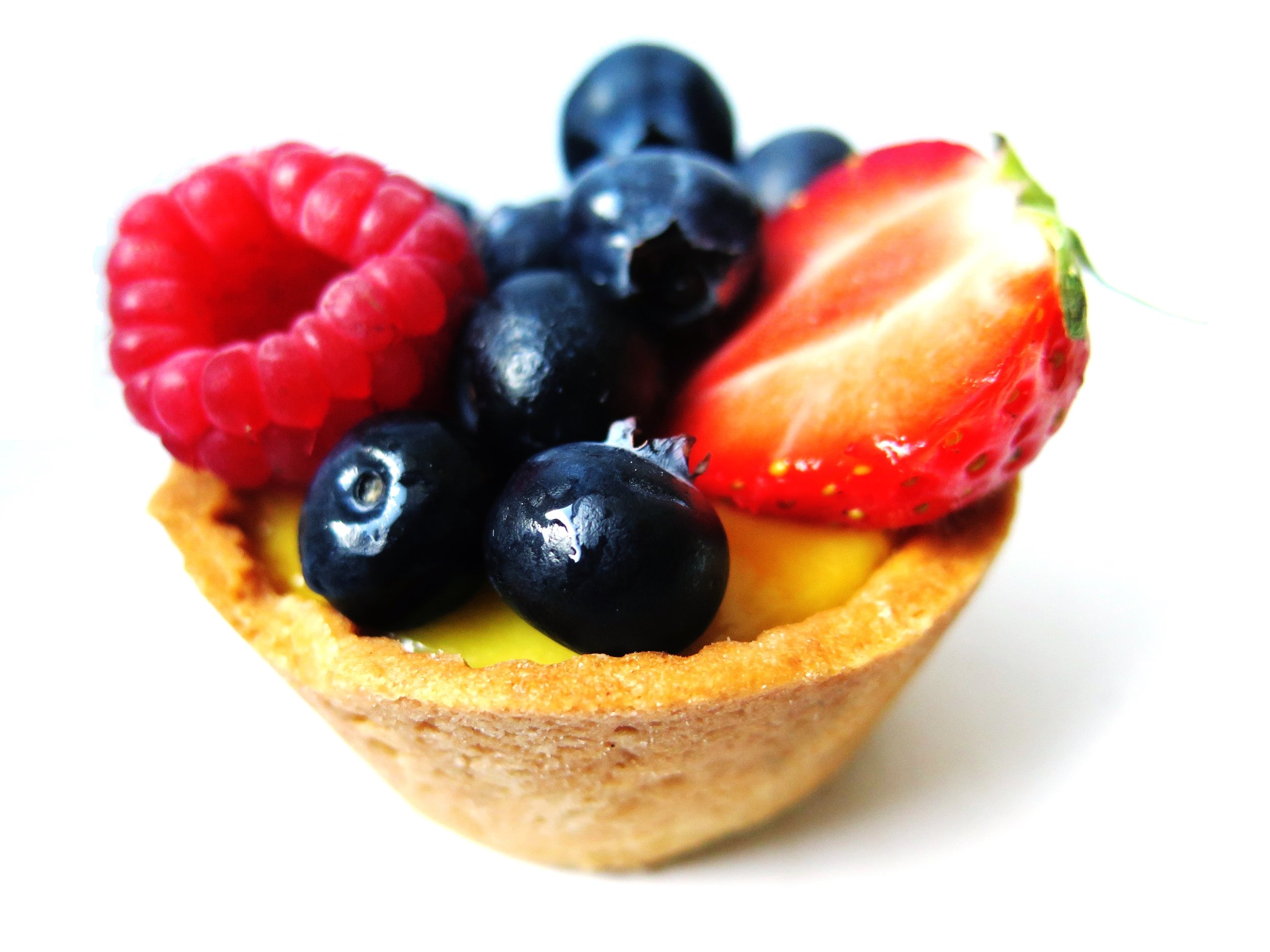
I use spelt flour in the pastry to add extra nuttiness and depth of flavour. It also has a lower GI than wheat flour. However, if you can't find it, you can substitute plain flour.
Lemon tart shells
360g white spelt flour (substitute with plain flour if unavailable)
110g icing sugar
Finely grated zest of 1 lemon
¼ tsp salt
190g cold unsalted butter, roughly chopped into small cubes
1 egg yolk
1 tsp vanilla extract
2 tbsp cold water
A 10cm pastry cutter
1 12-hole cupcake tin, greased with butter and then placed in fridge to chill
Baking beads or rice to weigh down the pastry while it bakes
12 cupcake cases
Lemon Curd
Finely grated zest of 4 lemons
200 ml lemon juice (4-6 lemons)
200g caster sugar
4 medium eggs
4 medium egg yolks
180g unsalted butter
1 baking tray with lipped sides
200g blueberries
150g strawberries
150g raspberries
Icing sugar for dusting
Method
Lemon pastry tart shells
- Blend together flour, sugar, lemon zest and salt in a food processor, and add in butter, pulsing to combine until the mixture resembles damp sand. Alternatively, if working manually, mix together the dry ingredients in a large bowl and rub the butter in with your fingers.
- Pour the egg yolk, vanilla and water into the mixture and pulse/stir until the mixture just comes together. Flatten the pastry dough into a disc , wrap in baking parchment/cling film and chill in the fridge for an hour, or freezer for 20 minutes.
- Preheat the oven to 150˚C.
- On a floured surface, roll half the dough out to the thickness of 2 or 3 mm, and cut the pastry into discs using the pastry cutter. Gently press the pastry discs into the prepared cupcake tin. You will find that there is some dough left over. This can be frozen for about a month.
- Set the cupcake cases into the pastry shells and fill them with the baking beads/rice to weigh the pastry down and prevent it from losing its shape during the bake.
- Bake in the oven for about 20-25 minutes until golden and firm to touch. If they have not turned golden by this point, remove the baking beads/rice and cupcake cases and bake for a further 5-10 minutes. Remove from the oven and set aside to cool. These can be made 2 or 3 days in advance and kept in an airtight container until you are ready to use them.
Lemon curd
- Place lemon zest, juice, sugar, eggs, egg yolks and half the butter in a saucepan over a medium-high heat and whisk continuously while the ingredients cook together. When the mixture has thickened slightly and threatens to stick to the bottom of the pan, reduce the heat and continue to whisk for another couple of minutes until thickened, whisking all the while. Off the heat, whisk in the remaining butter until thoroughly combined. It should be smooth and glossy.
- Sieve the curd over the baking tray, and spread it out with a spatula so that only a thin layer coats the tray. Cover the surface of the lemon curd with baking parchment or cling film and place the tray in the fridge for a minimum of half an hour or until it has cooled and become slightly firmer. Alternatively, place the tray in the freezer for 20 minutes.
Assembly
Arrange the pastry shells on a serving plate and spoon in the lemon curd (roughly 3 tsp per case). Top generously with the berries and dust with icing sugar just before serving. They can be kept in the fridge for up to 6 hours before serving; longer than that they tend to become soggy.
